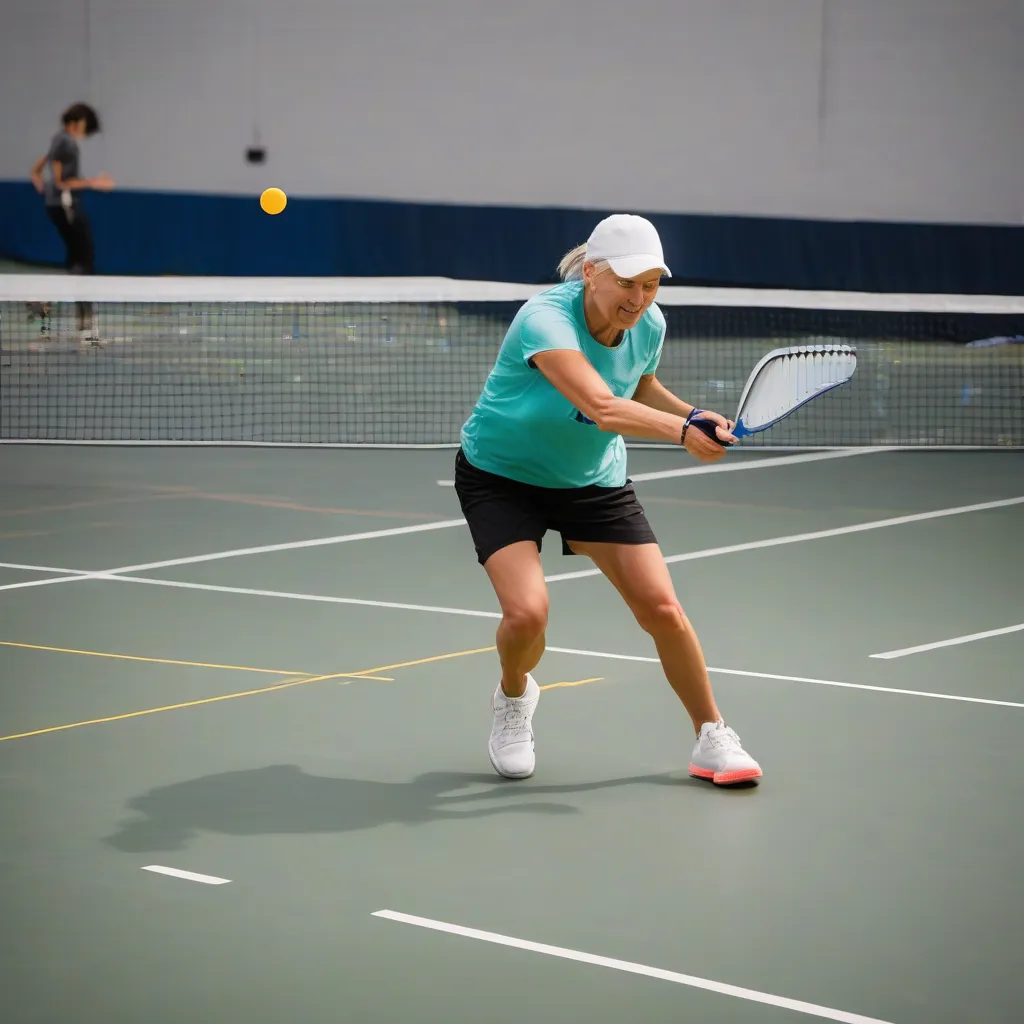Table of Contents
Pickleball Speed Drills: Introduction to Quickness and Agility
Speed is a critical factor in pickleball that can make the difference between winning and losing a point. Improving your quickness, reaction time, and overall agility can help you cover the court more effectively and outmaneuver your opponents. This guide covers the top 10 pickleball speed drills designed to enhance your performance and boost your game.
Why Speed is Important in Pickleball
Good speed in pickleball provides several benefits, including:
- Improved Court Coverage: Allows you to reach shots that would otherwise be out of reach.
- Faster Reaction Time: Helps you respond quickly to your opponent’s shots.
- Enhanced Agility: Increases your ability to change directions quickly and efficiently.
- Better Defense: Enables you to retrieve more shots and extend rallies.
- Offensive Advantage: Allows you to execute quick, unexpected shots that catch your opponents off guard.
 Pickleball Speed Drills
Pickleball Speed Drills
Top 10 Pickleball Speed Drills
1. Ladder Drills
Set up an agility ladder on the court and perform various footwork patterns, such as high knees, side steps, and in-and-out movements. This drill enhances foot speed, coordination, and agility.
2. Cone Drills
Place cones in different patterns and practice moving around them using quick, precise steps. This drill improves your ability to change directions rapidly.
3. Shadow Drills
Perform shadow drills by mimicking pickleball movements without a ball. Focus on quick footwork, explosive movements, and maintaining balance.
4. Reaction Ball Drills
Use a reaction ball, which bounces unpredictably, to practice catching and hitting. This drill enhances reaction time and hand-eye coordination.
5. Partner Rally Drills
Rally with a partner using quick, controlled shots. Focus on maintaining a fast pace and reacting quickly to each shot.
6. Sprints and Suicides
Incorporate sprints and suicides (running to different lines on the court and back) into your training routine. These drills build overall speed and cardiovascular endurance.
7. Quick Feet Drills
Stand in place and practice quick feet movements, such as running in place, high knees, and butt kicks. These drills improve foot speed and agility.
8. Plyometric Exercises
Incorporate plyometric exercises like jump squats, box jumps, and burpees into your routine. These exercises improve explosive power and speed.
9. Ball Drop Drills
Have a partner drop a ball from shoulder height while you stand a few feet away. React quickly and try to catch the ball before it bounces twice. This drill sharpens reaction time.
10. Defensive Slide Drills
Practice sliding laterally across the court while maintaining a low, balanced stance. This drill enhances lateral quickness and defensive positioning.
Tips for Effective Speed Training
Incorporate these tips into your training routine to maximize the effectiveness of your speed drills:
1. Focus on Form
Ensure you are using proper form during drills. Good technique enhances the effectiveness of your training and helps prevent injuries.
2. Start Slow
Begin with slower, controlled movements and gradually increase speed as your coordination improves. This approach helps build confidence and skill progressively.
3. Mix It Up
Incorporate a variety of drills into your routine to target different aspects of speed and prevent monotony.
4. Stay Consistent
Consistency is key to improving speed. Dedicate time each week to practice these drills and track your progress.
5. Prioritize Recovery
Allow for adequate rest and recovery between training sessions. Overtraining can lead to fatigue and decreased performance.
Common Mistakes to Avoid in Speed Drills
Avoid these common mistakes to ensure effective speed training:
1. Neglecting Warm-Ups
Always perform a proper warm-up before starting speed drills to prevent injuries and prepare your body for intense activity.
2. Rushing Through Drills
Avoid rushing through drills. Focus on performing each movement correctly and maintaining control.
3. Lack of Variety
Incorporate a variety of drills into your training routine to target different aspects of speed and prevent monotony.
4. Overtraining
Allow for adequate rest and recovery between training sessions. Overtraining can lead to fatigue and decreased performance.
5. Ignoring Weaknesses
Identify and work on your weak areas. Tailor your drills to address specific speed challenges you face during play.
Resources for Further Learning
For more detailed information on pickleball speed drills and improving your game, explore these valuable resources:
- Visit the USA Pickleball Association (USAPA) for comprehensive guides and official rules.
- Explore instructional videos and articles on Pickleball Central.
- Check out detailed reviews and tutorials on Pickleball Portal.
- Learn from top players and coaches on PickleballMAX.
Conclusion
Improving your speed through targeted drills is essential for enhancing your pickleball performance. By incorporating the top 10 drills outlined in this guide and following practical tips, you can boost your quickness, reaction time, and overall gameplay. Use these strategies to elevate your speed skills and gain a competitive edge on the court.
Frequently Asked Questions
- Why is speed important in pickleball? Speed is important because it improves court coverage, reaction time, agility, defense, and offensive capabilities.
- What are some effective speed drills for pickleball? Effective drills include ladder drills, cone drills, shadow drills, reaction ball drills, partner rally drills, sprints and suicides, quick feet drills, plyometric exercises, ball drop drills, and defensive slide drills.
- How can I improve my speed in pickleball? Improve your speed through consistent practice, focusing on proper form, starting slow, mixing up drills, and prioritizing recovery.
- What common mistakes should I avoid in speed drills? Avoid neglecting warm-ups, rushing through drills, lack of variety, overtraining, and ignoring weaknesses.
- Where can I find more information on pickleball speed drills? Explore resources like the USA Pickleball Association, Pickleball Central, Pickleball Portal, and PickleballMAX for comprehensive guides and tutorials on speed drills.